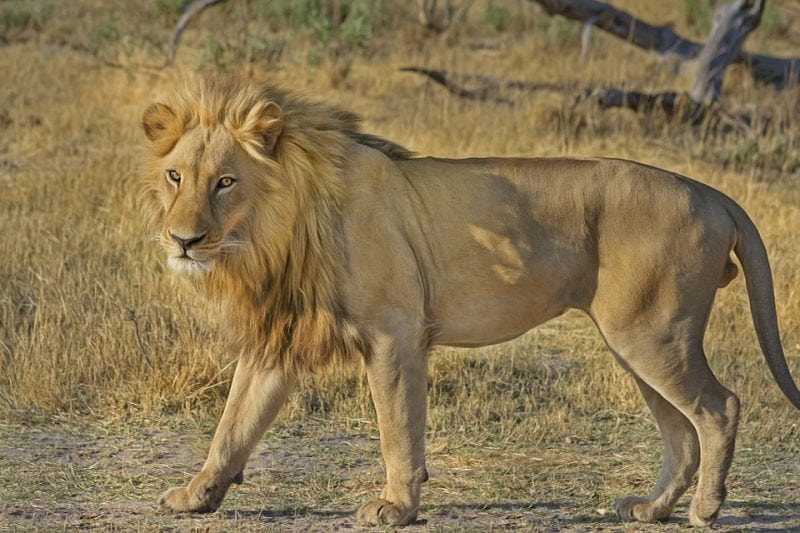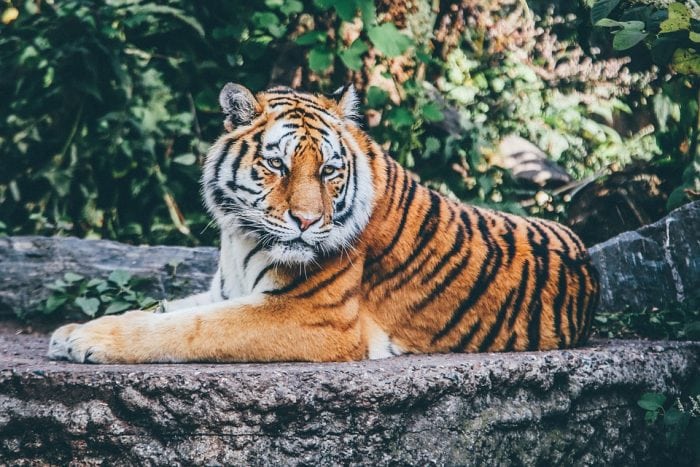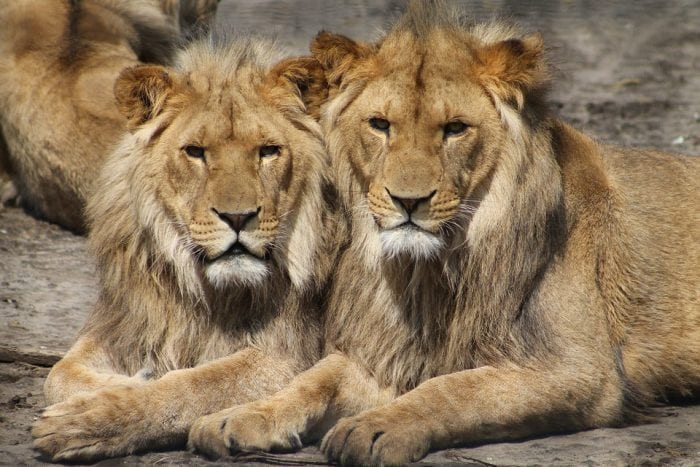
African lions are being hunted for their teeth and claws, putting a growing pressure on lion populations throughout Africa. Conservationists believe that the growing practice of hunting lions is being done to make up for dwindling numbers of tigers in across Asia. Parts of the lions are being sold in Asian countries as jewelry.
Four young lions were recently found with their paws and faces cut off in the Limpopo National Park, Mozambique. The recent killings are just symptoms of a much larger threat to lion populations, the widespread poaching of them for body parts which are sold as jewelry and other commodities in Asia.
Lions As Substitutions For Tigers
As tigers populations in Asia have dwindled down to less than 4,000 in the wild, other populations of big cats are being hunted as replacements. This includes jaguars, leopards, and lions. According to conservation groups in southern Africa and east Africa, more and more lions are being killed to satisfy demand for apparel in Southeast Asia and China where their body parts are often used in the creation of amulets and pendants.
Kristin Nowell, the director of Cat Action Treasury, says that there’s a “growing awareness” of how lion parts can stand in for tiger parts, and how available the lions are in parts of the African continent. Cat Action Treasury is devoted to the protection of big cat populations, and it has collaborated with the International Union for Conservation of Nature (IUCN) to create a “red list” for vulnerable big cat populations.

Photo: Pexels via Pixabay, CC0
Nowell says that research conducted by NGOs, along with seized shipments of animal parts reveals that some animal goods sellers are attempting to pass lion teeth and claws off as tiger parts. Most people wouldn’t know the difference between tiger and lions claws or teeth, and even if they did know the difference they wouldn’t be able to discern if they were from wild lions or a population of lions captively-bred in South Africa ( the body parts of which are deemed legal for sale).
Too Much Pressure On Lion Populations
Lion and tiger claws/teeth are frequently sold in the large crafts markets found in the southern part of Beijing, where they can be found alongside a large number of other animal products. Those who sell necklaces or pendants made out of tiger/lion claws claim that they will give the wearer strength and keep them safe from various types of harm. Much of the sale of big cat body parts is also done online. Nowell explains that poachers of lions tend to take teeth and claws rather than skin or bones because it is much quicker to harvest these parts, and doesn’t entail dragging off an entire lion carcass, making a quick getaway easier. The teeth and claws of a lion are also substantially easier to smuggle than bones or skin.
In addition to the threat posed to African lions by poachers looking for body parts to sell, the lion populations in Arica are also under threat from things like habitat loss and the loss of their wild prey due to the trade of bushmeat. Retaliatory killings, killings of lions which prey on cattle, are also a problem for wild lions. According to the IUCN, numbers of wild lions in Africa have dropped by around 43% since 1993. The last major survey of lion populations, conducted in 2014, found no more than 20,000 of them in the wild.
A global wildlife trade regulation group, the Convention on International Trade in Endangered Species of Wild Fauna and Flora (CITES), currently bans the trade of wild African lion parts. Despite this, South Africa can legally export the body parts of captive-bred lions. CITES states that most of these legal exports (up to 800 in a given year) go to Vietnam and Laos. The body parts are used to substitute for tiger bone wine. According to Nowell, this market creates incentives for illegal hunting and exports and CITES states that the number of illegal teeth and claws that have been seized from Asia during the past five years exceed the numbers of parts being exported legally.
Monitoring And Preventing Poaching

Photo: Aboeka via Pixabay, CC0
In 2016 the IUCN expressed their fears that lion parts poached throughout southern and eastern Africa could easily find their way into a network of illegal wildlife trade centered around Asia and the sale of elephant ivory. It’s difficult to disentangle the sale of lion parts from a larger scale illegal animal part trade. Nowell explains that the recent jump in sales of wild lion parts corresponds with an overall growth of poached African wildlife being sold in Asian countries. Lion teeth and claws are frequently found packaged with seized shipments of ivory and rhino horns.
The illegal sales channels that are used to ship banned animal parts are run by mainly the same people, according to Peter Leitner, project office for Limpopo National Park’s section of the Peace Parks Foundation. Leitner explains the connection:
If you’re in that trade, whether you’re selling ivory, rhino horn, body parts of lions, it’s the same markets, same ways of getting it out of the country, which the different levels of people involved know. It’s an opportunity to make money. So it’s more product. There is no doubt the same people are being used.
The poaching that is occurring in the Limpopo National Park is just one manifestation of a much bigger poaching movement, but its effects are already quite prominent. The past three years have witnessed poachers take teeth and claws from 20 lions in the park, which has reduced the park’s population by approximately 15%. If this trend continues at its current pace, lion populations could be wiped out in some areas.
Conservation groups around the world are fighting back against the poaching of big cats. In Limpopo, one of the current hotbeds of lion poaching, the park recently trained 40 new recruits for the park’s field staff. Some of these new recruits will join a specialized anti-poaching team and protect lions from poachers. Leitner explains that their goal is to intervene and arrest poachers before they kill the lions. To help this make this happen, the recruits are being trained to identify and follow the tracks of both lions and poachers. Furthermore, the recruits are being instructed in the removal of poisoned carcasses and lion snares.
Limpopo will also be upgrading its fleet and doing its best to gain information on potential poachers. The park is adding more vehicles and helicopters and will be paying informants if their tips lead to successful arrests.
Around the world, conservation groups are advocating for sterner law enforcement to deter the trade of illegal animal parts and are also advocating for a ban on the legal trade of lion parts. Nowell explains that conservationists worry that the current trade problem could “escalate and really get out of hand, like it did for the tiger.”









